Written by Joel Basa, e-Marketing Manager at Xerox Corporation
Welcome to our first Live Blog from the Higher Education Thought Leadership Workshop. We’re coming to you from the Gil Hatch Center located in Webster, NY. This Live Blog will provide a glimpse into a Thought Leadership Workshop (TLW) on Higher Ed. Refresh your screen often for the latest updates.
Agenda
- 8:30-9:30 – In-Plant Business Excellence – Peter Muir, President, Bizucate, Inc
- 9:30-10:30 – eBooks & the Book Industry: Higher Education Implications – Neil Falconer, Pira International
- 10:45-11:30 – Academic Pub Discussion – Dave Brown, SharedBook
- 11:30-12:15 – Insight into an Online Global Digital Print – Frank Steenburgh, CMO, ColorCentric
- 1:00-2:00 – Customer Testimonial: Wayne French, Ithaca College and Bob Keats, Colgate University
- 2:00-3:00 – Production Floor Tour
[08:30] – We should be getting started very shortly everyone. Looks like we’ll have a full house here with participants from Ithaca, NY, Vancouver, Pennysylvania, Connecticut, Utah
[08:37] – Our session is kicking off. Again, we’re coming from Webster, NY. I’ll be posting a photo of our workshop a little later. Ed D. from Xerox has now taken the stage and is reviewing today’s agenda. He’s brought up a few great collatarels: a great personalized packaging example, a 3D Print Application and everyone has put on their 3D glasses!
[08:43] – Karen from Lytrod Software is showing a few great personalized examples and some Clear Dry Ink examples. Plus showing some great examples of QR Codes enabled by their software. Photo coming a little later! Lots to type here and my fingers aren’t fast enough!
[08:49] – Okay, now we’re going to start our presentations with Peter Muir(@PeterMuir) kicking us off this morning with a presentation on In-Plant Business Excellence! Very interesting concept. Business Excellence = Strategic Relevance + Operational Excellence + Taking Risks. To learn more about Strategic Relevance and Operational Excellence, go to page 24 of this PDF.
[08:58] – Peter asks the question what the run length number to cross over from offset to digital? He’s asked everyone to answer the question and the numbers are all over…everywhere from 3 to 4000. What would you answer? Comment below.
[9:01] – Strategic Relevance is defined as being Integral part of the organization you serve by understanding customers, marketplace, products and services that drive the organization. 5 Steps to Strategic Relevance are: consider your customer, understand the market, develop a plan, market your services, expand your offerings. For more info on Strategic Relevance go to page 24 of this PDF.
[9:03] – Operational Excellence – Continuous improvement that empowers employees and optimizes activities to deliver on the needs of customers efficiently and effectively. In a nutshell, it is streamlining processes. 5 steps to Operational Excellence: understand your goal, measure your current state, analyze your data, develop your plan, implement and track results. For more info on Operational Excellence go to page 24 of this PDF.
[09:06] – Taking Risks slide now…Peter references Seth Godin’s book “Poke The Box.” I haven’t read it but “its about taking initiative, a first step toward creating change.” A quote from Seth, “The job isn’t to catch up to the status quo; the job is to invent the status quo.”
[09:12] – Question raised by Peter, “If you could start one thing today, what would it be? Make it simple or make it grand but what would it be?”
[09:24] – A summary of some of Peter’s recent points: taking risks requires facing the fear, getting support of your efforts, but you must be prepared to face lack of support (enemies). Think about this in your print operations. What are methods to seek support for your efforts and what are some of the elements that will prevent you from facing your fear? Financing? Headcount? Technology?
[09:34] – Making mistakes is part of the ride…every innovation in our world started with a long list of failures. Experimenting and putting yourself out there are part of the risk. If we can accept that we could fail, once, twice, maybe 20 times…failing can feel more natural and part of the process. Knowing that we can fail makes us more powerful and increases our chances of success.
[09:41] – Peter is wrapping up now. He ends with these three questions for in-plants. What 3 things will you start doing? What 2 things will you stop doing? What one thing will you celebrate that you do well? Ask yourself these questions and please comment below.
[09:45] – Just started our next agenda items on eBook and the Book Industry. Here we go!!!!
[09:50] – Interesting statement: You don’t throw books away? Agree or disagree?
[10:00] – Pira indicates that our growth is occurring in one of two: packaging. They also talk about the growth of inket technology and how amazing it is that this technology can perfectly place 3 million drops per second a piece of paper. Amazing!
[10:05] – Just showed a list of a printer’s new tools of the trade. I wasn’t able to capture all of them. Some are: automated workflow, web to print, digital storefronts, design with variable data, database management.
[10:11] – The supply chain structure has changed for the book industry. On-Demand direct to the customer and On Demand personalization. Example: Professors select content for their own textbooks.
[10:14] – Great example of the changing dynamic of print: Cambridge University Press: 2000 new Print On-Demand titles annually – 55% new paperbacks. E-book versions, 3000 in 2004 to 11000 by 2008.
[10:18] – Will eBooks start to dominate the market? Some eReader Barriers: Lack of Standardization, Guaranteed obsolescence, image quality, reading behaviours. eBook readers relying on paper document metaphor not a desktop metaphor, reading factors. Do you agree? Do you think we’re reaching a point where the technology can overcome these barriers?
[10:22] – How about mobile devices? Statement was made that the iPhone is the device most used for reading books. I certainly didn’t know that. How does mobile play into your print operations and managing content?
[10:28] – Great video being shown on FlipBoard. I don’t have an iPad but its an App for and iPad that presents content by connecting content in various social networks in one central place. Marketed as a “personal magazine.” Interesting.
[youtube]http://www.youtube.com/watch?v=v2vpvEDS00o[/youtube]
[10:33] – Music to my ears. Social Media will become a source of content and information for print operations. Have you thought about how you can use social media in your operations?
[10:39] – Another magazine featuring Augmented Reality. I’ll try to find this video URL to link to but I’ll describe in the meantime. The video showed a magazine and with the help of a free application, a smartphone can “interact” with the printed magazine and make the magazine’s content either show additional content and enhanced media. Definitely want to share this video. This is really great example of the blending of print media with social media. Mashups!
[10:43] – What to do next: Get online. Get mobile. Get social. Get linked. Do it right. Integrate. Start now. – Another great video that I was able to find. Check it out!
[youtube]http://www.youtube.com/watch?v=Weq_sHxghcg[/youtube]
[10:45] – Break time! My fingers are tired! Next up AcademicPub Discussion.
[11:03] – Here we go! Slide reads, “Welcome to AcademicPub…Custom Course Materials…Now”
[11:10] – SharedBook is describing their business. They are centered around customized course material for academic professors. “Your Dynamic Course Materials Solution, Offering Broad Choice and featuring Real-Time Copyright Permissions and Delivery.” Some trends mentioned: custom publishing by textbook publishers is EXPLODING, pressure on textbook publishers over price, more chunking of content available, web as a content resource.
[11:17] – Demo time…SharedBook showing us how to build a customized book. You can select material from a library or upload your own content including PDF and DOC and also adding web content (blogs, etc). I’m sure my professors could of used this functionality. I remember skipping large sections of textbooks during my time in college. Great value add!
[11:34] – Still doing the demo. Wish I could show a live stream! (Idea for next time maybe?). SharedBooks has customized a book projects cover, added some content from a library, added an article from NY Times and now its outputting the customized textbook. Great stuff!
[11:40] – Wrapping up this portion of the workshop. SharedBooks is fully launching in April. Check their web site for more info.
[11:43] – Wrapped up the great demo by SharedBook. Next up: Insight Into an Online Global Digital Print presented by ColorCentrics
[11:51] – ColorCentrics talks about a business model centered around the ability to print a quantity of 1. Although many of their runs are in quantities of 1000+, the idea of being able to meet the requirements of printing 1 is intriguing.
[11:57] – Some great examples being shown. Trying to take a photo of the samples brought in by ColorCentrics. Some examples include: Build A Book, Event Books that allow a consumer to pic professional photos from an event and then add their own photos as well.
[12:09] – Wrapping up this portion shortly, still hoping to take some photos of the great samples. I’ll try to during break.
[12:15] – Break team for lunch! We’ll return around 1:00 with Customer Testimonials followed by a tour of the Gil Hatch Center Floor.
[13:00] – Okay we’re back. Next up will be customer testimonials by Colgate University!
[13:07] – Colgate is talking about Relevance in the Digital Age! They do a LOT of work: Color Imaging, Digital Print, On-Demand Printing, Design, VDP, Wide Format and much more.
[13:15] – Colgate discusses how 5.5 years ago, the business landscape was very different but they recognized the need to shift to digital with discussions of “on-demand” and “VDP.” They asked how they were perceived by the enterprise? cost center? revenue center? How about value center? This ties directly into the strategic relevance discussion that started our workshop.
[13:18] – The Colgate in-plant operations took the step to look at the larger university’s mission, vision and values and see how they could align their operations with this. They also recognized that within the larger university, there were smaller missions specific to each college. They started a SWOT analysis and this is what started their transformation.
[13:29] – Colgate is talking about how they used QR Codes for admissions printed material since they recognized this was popular with students.
[13:32] – Value of Digital Press at Colgate – Unusual products such as Casino boxes-self-promotions or customer use as Open House takeaways. Same Day Production (ondemand Sports Media Guides, Sports programs, Special Events passes. On-site press sheets – real press sheets as they will look finished, not a facsimile or “proof.” Much of the material was printed on their iGen press.
[13:40] – Colgate asks the questions, “So, where now?” Colgate has made the transition from Offset to Digital but they recognize their operations needs to continually evolve to remain strategic relevant. They cite social media as a potential factor in how they will evolve. Great way to close. We’ll be starting the Gil Hatch Center Tour shortly.
[13:55] – Customers taking a look around the floor here at Gil Hatch. Shown here is the Xerox Color 800/1000 Press.
[14:00] – Some application samples supplied by Lytrod Software. Examples include: Higher Education Kit, QR Codes, Clear Dry Ink.
[14:12] – Okay, I’m wrapping up here. Our guests continue to tour the Gil Hatch floor. If you’re interested in taking a virtual tour of the center, click here.
Hope you had a great time and learned some valuable information. If you have any questions, please comment below and I can still have them answered. If you or any of your collegues are interested in coming to the Gil Hatch Center to attend the variety of workshops we have available, please contact your Xerox sales rep or visit here.
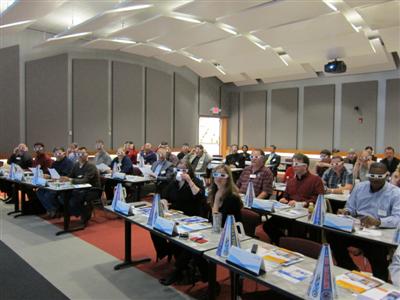
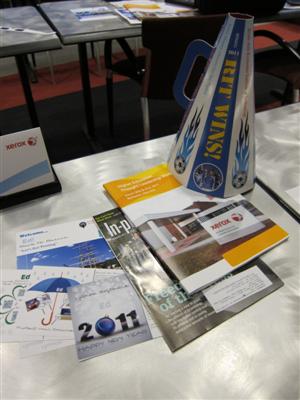
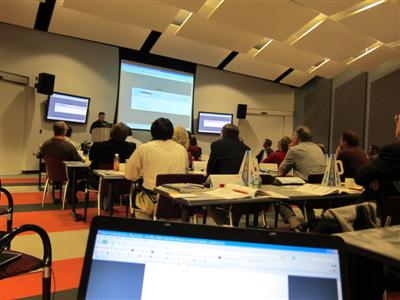
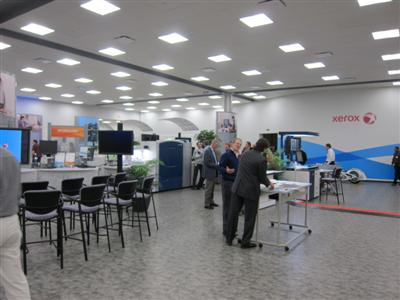
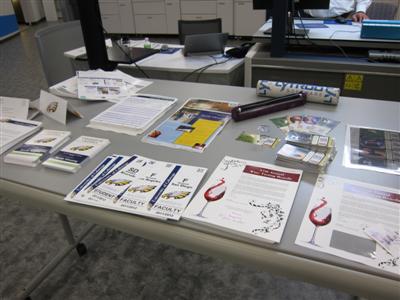
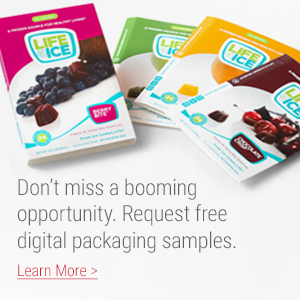
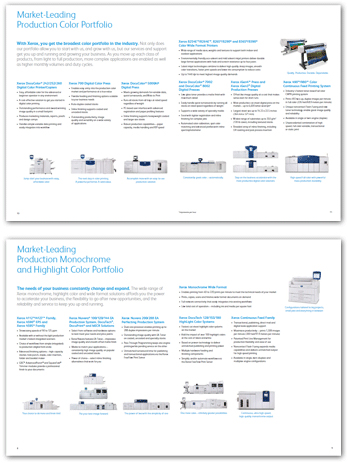

Live blog what an intersting idea … its like a ongoing series of messages from Twitter. I wonder which is more effective … a site like this or through Twitter ?
Great question Howie. Of course the Twitter character limit presents a challenge and adding photos and videos all in one place is nice. I think the answer is to do both!
Howie,
I find it incredible to see real time posts about what we’re covering appearing on line. I agree it’s nice to have more than 140 characters.
One of the lessons from today’s workshop is to investigate new communication channels and this is a perfect example of investigation, testing and ongoing value a a follow up from the event for the attendee and non-attendee.
Thanks to Joel for his efforts and personal passion between the lines of what was covered.